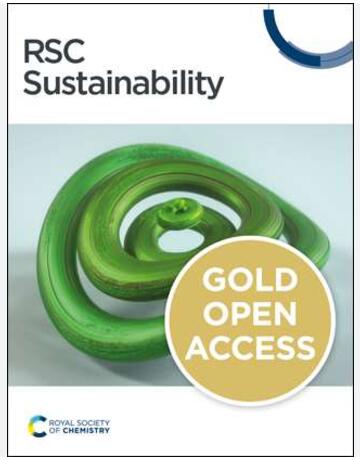Between Meteorite, Glacier and Rivers—Towards Geotourism Development in Diverse Landscape
IF 3.3
3区 环境科学与生态学
Q2 ENVIRONMENTAL SCIENCES
引用次数: 0
Abstract
The morphogenetic diversity of an area often determines its high geodiversity, which is subsequently used for geotourism. Areas where geotourism is being intentionally developed note the funded impacts resulting from increased interest in the area by tourists. This paper presents a morphogenetically diverse area that has been formed by glacial activity, cosmic factors—meteorite impacts, fluvial factors and anthropogenic factors—especially those related to industrial activities and settlement processes. In this manuscript, we identified and assessed geosites in the diverse landscape of the Poznań region (Poland), as well as analyzed strengths, weaknesses, opportunities and threats in relation to possible activities aimed at the development of geotourism. The multi-criteria assessment of existing and proposed geosites and SWOT analysis was used by us to assess geotourism development potential in this genetically highly diverse landscape. The work presented here demonstrates that not all formally created geosites by geological institutions are potentially attractive from the point of view of geotourism. The main factors that reduce the attractiveness of geosites are the lack of recreational infrastructure, poor accessibility and low educational values. The spectacularity of geosites is most often determined by their aesthetic value, representativeness, rareness and paleogeographical interest. The Poznań region has a high potential for the development of geotourism due to its valuable sites (Morasko Meteorite Reserve, Dziewicza Hill, post-mining area Szachty, Genius Loci and Ostrów Tumski); however, there is a need to develop a geotourism development strategy in the area. Given the morphogenetic diversity of the study area, there is a need to create a unique landscape geointerpretation center in this part of Europe, with a role in integrating tourism and especially geotourism activities.在陨石、冰川和河流之间--在多样化景观中发展地质旅游
一个地区的形态多样性往往决定了其高度的地质多样性,随后被用于地质旅游。正在有意开发地质旅游的地区注意到,游客对该地区兴趣的增加带来了资金方面的影响。本文介绍了一个由冰川活动、宇宙因素(陨石撞击)、河流因素和人为因素(特别是与工业活动和定居过程有关的因素)形成的形态多样的地区。在本手稿中,我们对波兹南地区(波兰)多样地貌中的地质景观进行了识别和评估,并分析了与可能开展的地质旅游活动相关的优势、劣势、机遇和威胁。我们对现有和拟议的地质景观进行了多标准评估,并采用 SWOT 分析方法来评估这一基因高度多样化景观的地质旅游发展潜力。本文介绍的工作表明,从地质旅游的角度来看,并非所有由地质机构正式创建的地貌景观都具有潜在的吸引力。降低地貌景观吸引力的主要因素是缺乏娱乐基础设施、交通不便和教育价值低。地貌景观的壮观程度通常取决于其美学价值、代表性、稀有性和古地理学意义。波兹南地区因其宝贵的景点(莫拉斯科陨石保护区、Dziewicza 山、Szachty 后矿区、Genius Loci 和 Ostrów Tumski)而具有发展地质旅游的巨大潜力;然而,该地区需要制定地质旅游发展战略。鉴于研究区的形态多样性,有必要在欧洲的这一地区建立一个独特的景观地质解释中心,在整合旅游,特别是地质旅游活动方面发挥作用。
本文章由计算机程序翻译,如有差异,请以英文原文为准。
求助全文
约1分钟内获得全文
求助全文
来源期刊

Sustainability
ENVIRONMENTAL SCIENCES-ENVIRONMENTAL SCIENCES
CiteScore
6.80
自引率
20.50%
发文量
14120
审稿时长
17.72 days
期刊介绍:
Sustainability (ISSN 2071-1050) is an international and cross-disciplinary scholarly, open access journal of environmental, cultural, economic and social sustainability of human beings, which provides an advanced forum for studies related to sustainability and sustainable development. It publishes reviews, regular research papers, communications and short notes, and there is no restriction on the length of the papers. Our aim is to encourage scientists to publish their experimental and theoretical research relating to natural sciences, social sciences and humanities in as much detail as possible in order to promote scientific predictions and impact assessments of global change and development. Full experimental and methodical details must be provided so that the results can be reproduced.
 求助内容:
求助内容: 应助结果提醒方式:
应助结果提醒方式:


